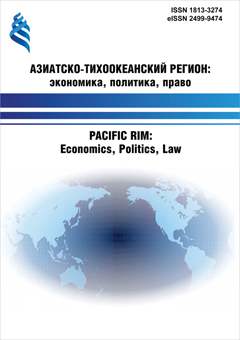THE CHANGING BALANCE OF POWER IN EURASIA AND PROSPECTS FOR RUSSIAN-CHINESE COOPERATION
DOI:
https://doi.org/10.24866/1813-3274/2022-3/73-88Keywords:
Bigger Eurasia, Central Asia, Shanghai Cooperation Organization, Balance of Power, Russian-Chinese cooperationAbstract
The article is devoted to the key aspects of cooperation between the Russian Federation and the People's Republic of China in Eurasia in the context of the changing balance of power in the region. Greater Eurasia is viewed as a new concept of interaction and collaboration between the states of the continent, which emphasizes equal cooperation and inclusiveness. Central Asia is the geopolitical core of Eurasia, a cross-border region capable of ensuring the connectivity of the entire continental space in the prominent future. At the same time, the Shanghai Cooperation Organization is currently the main international institution of both Central Asia in particular and Eurasia in general. The theoretical basis of the research relies on the concept of the balance of power, which is the cornerstone for the paradigm of political realism in the International Relations Theory. The authors refer to different indices of the aggregate strength of states for the purposes of calculation of regional balance of power. The classic and most known indices are the Composite Index of National Potential by D. Singer and the Index of Perceived Power by R.
Klein. In order to assess the aggregate potential of states, this article uses the index of aggregate national power created by the Taiwanese researcher Chang Chin-Lung. The calculation of total power of the SCO member states using the index formula has led to a number of conclusions. Therefore, the prospect of forming a ‘triangle’ in Eurasia seems to be interesting due to the fact that in terms of their material capabilities China, Russia and India are significantly superior to other countries in the region, while their goals and interests are not always identical.



